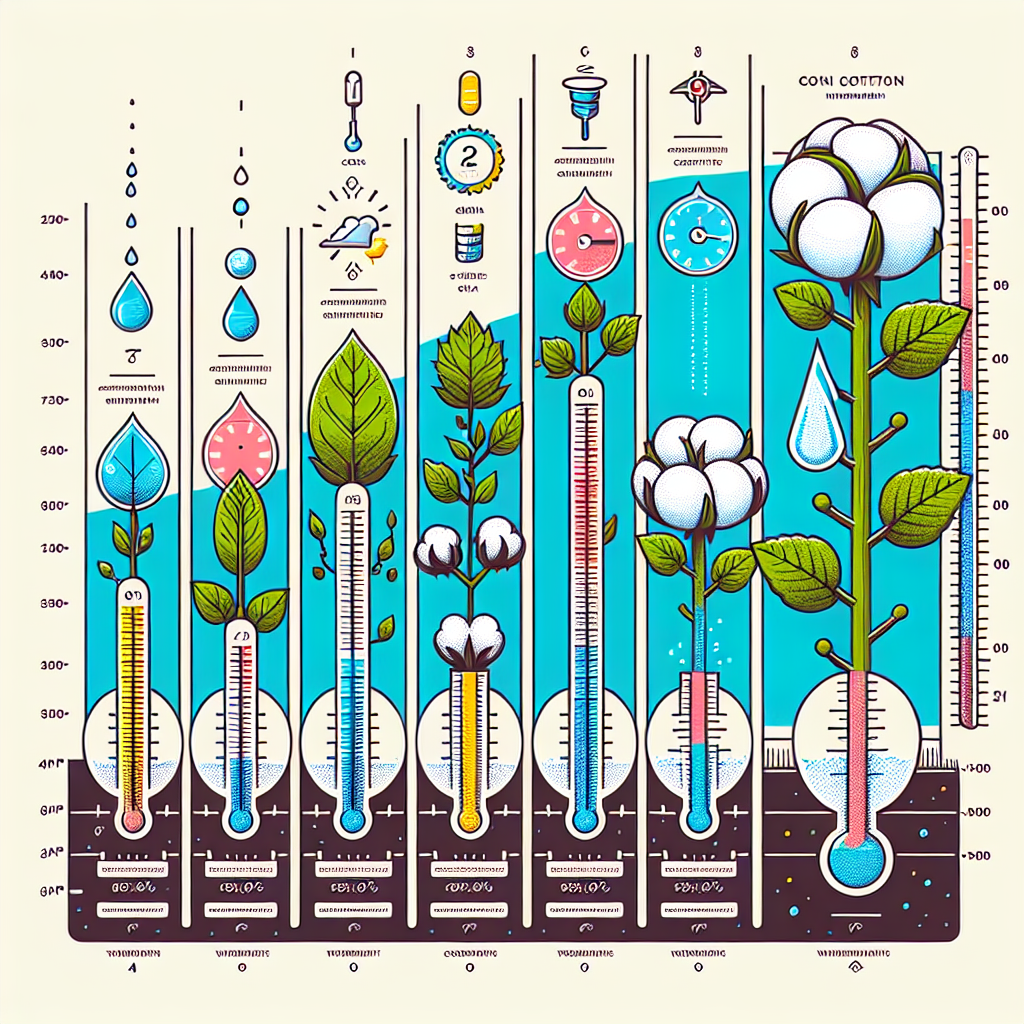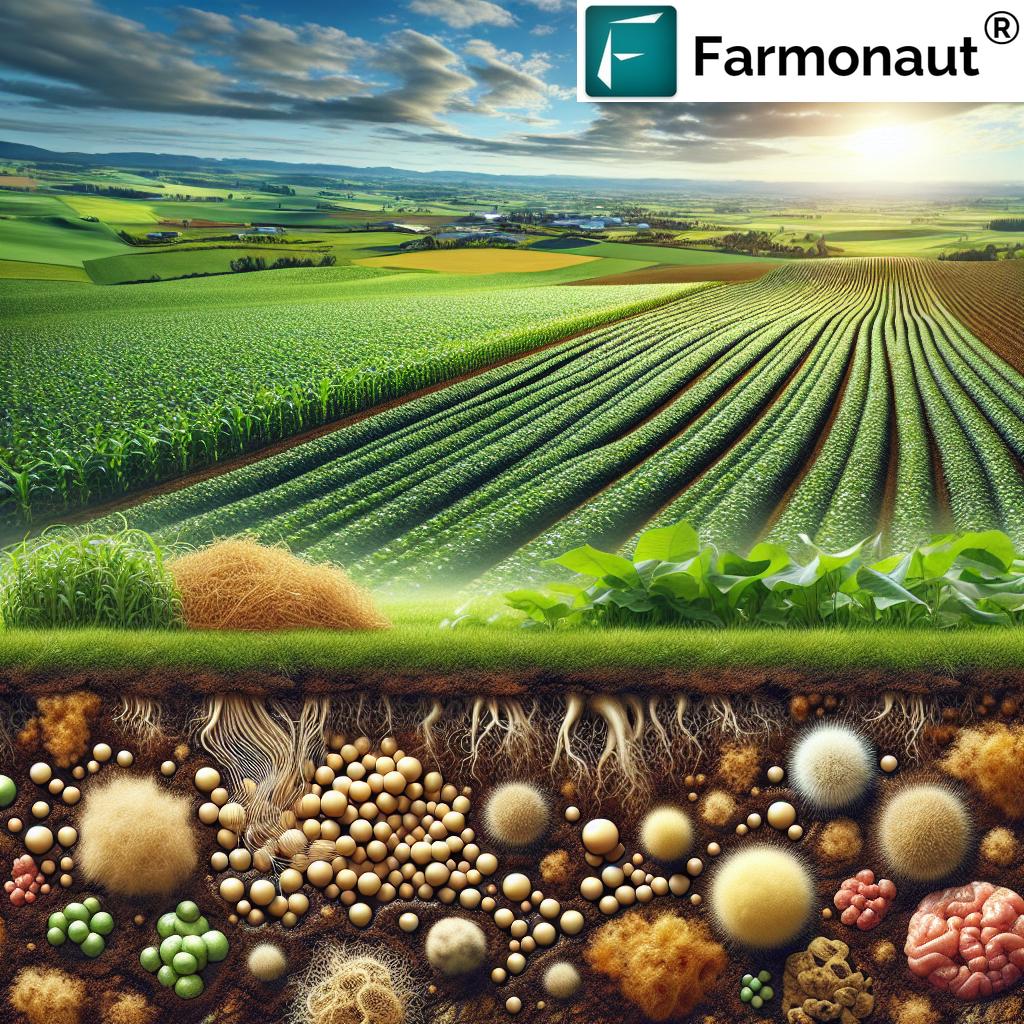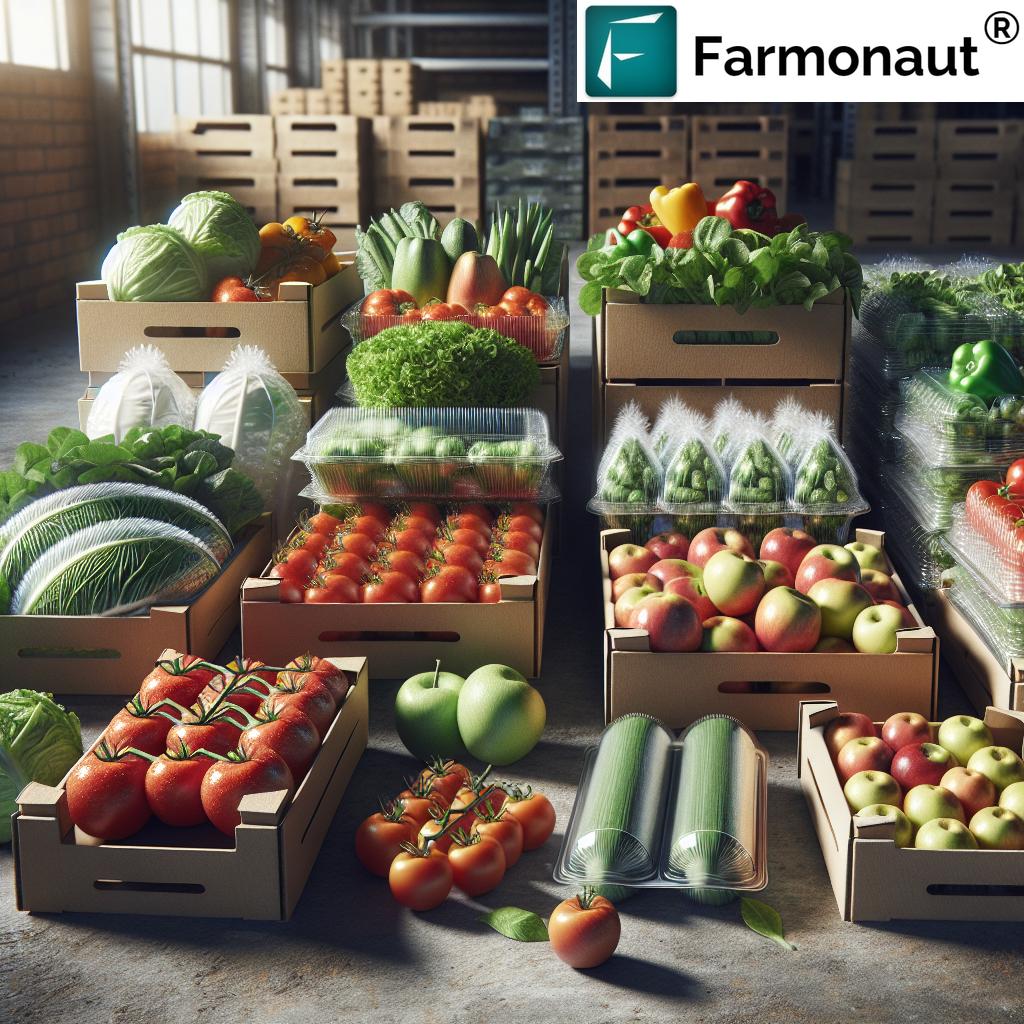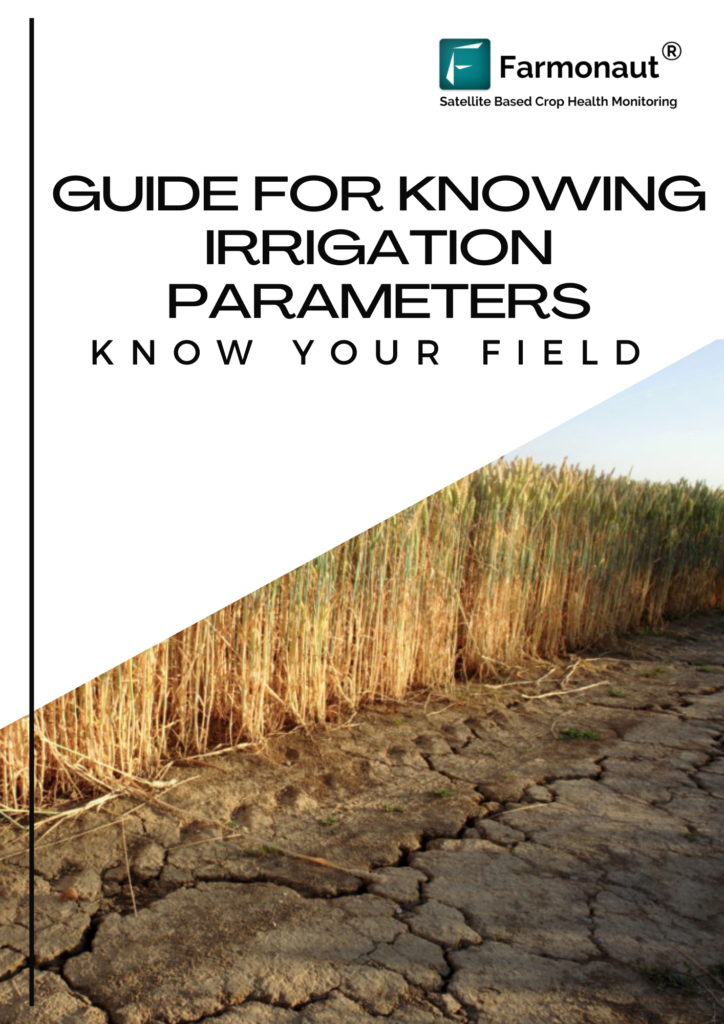Milking Cows Near Me: 7 Powerful 2026 Dairy Innovations
Table of Contents
- Introduction: The Heartbeat of Dairy—Milking Cows in 2026
- Milking Cows Near Me: 7 Dairy Innovations for 2026
- Feature Comparison Table of 2026 Dairy Milking Technologies
- How Milking Technology Improves Animal Welfare
- Milking Supplies for Cows: Availability, Quality & Sustainability
- “Milking Cows Near Me”: The Power of Local Dairy Farming
- Farmonaut’s Role in the Future of Dairy Farming
- Dairy Sustainability: Balancing Production, Environment, and Community
- FAQ: Milking Cows, Machines, and Dairy Innovation in 2026
Introduction: The Heartbeat of Dairy—Milking Cows in 2026
The practice of milking cows stands as the cornerstone of the global agricultural industry, underpinning the supply of nutritious cows milk that feeds millions worldwide. In 2025 and as we approach 2026, technological advances combined with evolving farmer practices have propelled the industry forward, transforming traditional milking methods. These innovations are not just about improving efficiency—they also support better animal welfare, enhanced product quality, and embrace a spirit of sustainability that is essential to the future of dairy production.
Milking cows, whether accomplished manually or mechanically, requires great skill and care. As consumer preferences shift toward organic, locally sourced, and ethically produced milk, farmers are pushed to adopt the best practices in hygiene and cow welfare, ensuring the health of their herds and safety of the food supply. The rise of automatic milking systems (AMS)—or what’s commonly called a milking machine for cows—has revolutionized dairy farming. These machines reduce labor intensity, increase productivity, and allow farmers to monitor the health of their cows in real time.
The demand for convenient access to milking supplies for cows—such as teat sprays, milking liners, milking clusters, and cleaning solutions—has grown alongside milking automation. Today, farmers routinely search for milking cows near me or milking supplies near me to find reliable suppliers that can keep their operations running seamlessly. Local availability of supplies ensures reduced downtime and optimal working conditions—because in dairy, every minute counts.
In this comprehensive guide, let’s explore the seven most powerful dairy innovations of 2026 that are transforming the milking cows practice for farmers worldwide—improving production, animal welfare, and sustainability.
Milking Cows Near Me: 7 Dairy Innovations for 2026
The dairy industry of 2025 and beyond stands at the intersection of age-old knowledge and new technology. The following seven innovations are shaping how milking cows near me continues to be a query on the rise—not only for supplies but also for cutting-edge solutions that maximize yield and animal welfare.
1. Next-Generation Automatic Milking Systems (AMS)
- Automatic milking systems use gentle suction mechanisms that mimic the natural milking action of a calf, greatly reducing stress for the cow.
- Equipped with sensors to monitor milk flow, detect mastitis early, and track animal health metrics in real time.
- 2026 models offer greater automation, letting cows choose their own milking times—aligning with their natural behavioral cycles.
- Decreases labor intensity and increases productivity, especially for mid- and large-sized farms.
AMS has triggered a revolution in milking cows practices and continues to grow in adoption worldwide. These solutions also streamline data for farm management platforms, helping farmers make informed decisions.
2. Advanced Teat Care & Hygiene Solutions
- Innovative teat sprays and dips target bacterial contamination, reducing risks of mastitis and promoting udder health.
- Automatic teat cleaning systems are now integrated with milking machines for cows, ensuring sanitation before and after each milking session.
- New antimicrobial liners and alternative eco-friendly solutions limit chemical residues in milk, aligning farmer practices with consumer demands for quality and safety.
Proper hygiene and care remain essential to ensure the safety of cows milk and the welfare of the herds. New teat care practices can improve yield by reducing illness-related downtime.
3. Data-Driven Herd & Production Management
- Latest milking machines come with AI-powered sensors that collect data on milk yield, fat content, milking frequency, and cow health.
- Herd management systems use this data to generate individualized feeding regimens and early disease warnings.
- Precision farming techniques reduce waste and optimize use of resources, thus sustaining profitability and environmental impact.
Data analytics are critical in guiding farmers toward improving animal health, yield, and overall farm management, reducing reliance on guesswork and manual logs.
Farmonaut provides satellite-based tools for real-time monitoring of vegetation health, soil conditions, and resource management. These data-driven solutions empower farmers to optimize their dairy production and make more sustainable operational decisions. To learn more about our APIs and integrate these insights directly into your digital platform, check out the Farmonaut Satellite API and developer documentation at API Developer Docs.
4. Blockchain Dairy Traceability
- Blockchain-enabled systems guarantee full traceability of cows milk—from milking at the farm to shipment and sale.
- This ensures transparency and reduces fraud, which is a growing consumer concern.
- Supports organic and ethically produced dairy goods markets, providing verified data about sourcing and animal welfare standards.
Farmers and processors using these blockchain solutions, such as Farmonaut’s Product Traceability, can build consumer trust in the dairy industry—a key factor in sustaining local brands and exports.
5. Energy-Efficient & Sustainable Milking Infrastructure
- Modern milking machines are now designed to use less energy, more efficient electric motors, and water-saving cleaning cycles.
- Environmental compliance is increasing, with systems for carbon foot printing now demanded in top-tier dairy markets.
- Such tools help farmers manage their footprint, access eco-labels, and qualify for green financing, crucial for scaling sustainable milk production.
To further support sustainable decision making, apps like Farmonaut’s Carbon Footprinting Solution allow farmers to track their emissions and environment impact.
6. AI-Powered Farm Fleet & Resource Management
- Fleet management platforms, such as Farmonaut Fleet Management, streamline the logistics of milking supplies, milk transport, and maintenance of milking machinery.
- Predictive maintenance powered by AI extends machinery durability and reduces downtime on the farm.
- Resource optimization drives cost savings and supports sustainable farming practices.
Integrating AI-powered systems into dairy operations introduces dramatic efficiency gains, especially for large operations where machinery, personnel, and supplies must be harmonized.
7. Farmer-Centric Training & Knowledge Digitalization
- Widespread mobile apps and web tools deliver best practices for milking, animal welfare, and regulatory compliance.
- Satellite- and AI-powered advisory services, like JEEVN AI Advisory System from Farmonaut, provide real-time recommendations tailored to local conditions, herd health metrics, and crop status.
- Farmers can now participate in virtual communities, access training modules, and consult with experts in real time, no matter how remote their location is.
Digital knowledge-sharing bridges the gap for new farmers and experienced operators alike, making advanced milking practices accessible worldwide.
Combining these seven dairy innovations with a push toward localization ensures the milking cows practice can adapt to global demands while supporting sustainable and ethical ambitions for generations to come.
Feature Comparison Table of 2026 Dairy Milking Technologies
| Innovation Name | Estimated Yield Increase (%) | Animal Welfare Impact (1-5) | Automation Level | Sustainability Score (1-10) | Estimated Cost Savings (%) | Adoption Readiness (2025-2026) |
|---|---|---|---|---|---|---|
| Next-Gen Automatic Milking Systems (AMS) | 28–32% | 5 | Full | 9 | 20–30% | Ready Now |
| AI Herd Management & Analytics | 10–15% | 4 | High | 8 | 10–15% | Widespread |
| Sustainable Energy-Efficient Milking Machines | 12–20% | 4 | Medium-High | 10 | 15–22% | Mainstream |
| Blockchain Dairy Traceability Platforms | <5% | 4 | Medium | 9 | 10–12% | Rising |
| Eco-Friendly Milking Supplies & Hygiene Solutions | 5–10% | 5 | Medium | 10 | 8–12% | Mainstream |
| Predictive AI Fleet Management for Dairy | 6–12% | 3 | High | 9 | 14–20% | Available |
| Digital Training Platforms (AI, AR, Remote) | Indirect | 5 | Medium | 9 | Difficult to Measure | Widespread |
How Milking Technology Improves Animal Welfare
A growing focus on animal welfare—driven by consumer preferences and sustainable farming mandates—has led to major improvements in how we milk cows. Here’s how the latest milking machine for cows and allied technologies foster better welfare and reduce stress:
- Gentle milking action: AMS and modern milking clusters use pressure sensors and soft silicone liners, preventing teat injury and udder discomfort.
- Flexible schedule: When cows can decide when to be milked, stress decreases and production improves.
- Electric ID tags: Cows wear contactless tags that track each animal’s health metrics, giving farmers an early warning in case of illness.
- Climate monitoring: Smart barns adjust air flow, bedding, and shade to ensure comfort during milking.
Improved animal welfare helps maintain consistent product quality and enables farmer milking cow to meet strict export regulations and organic certification standards.
Milking Supplies for Cows: Availability, Quality & Sustainability
With the rapid evolution of milking technologies, the demand for milking supplies for cows—such as milking liners, teat sprays, milking clusters, and sanitation solutions—has never been greater. However, having the right accessories is about more than just keeping up with technology: it’s about ensuring safety, comfort, and consistent yield.
- Local suppliers: Searching for milking cows near me or milking supplies near me connects farmers with reliable vendors who understand regional needs and offer rapid delivery for critical components.
- Enhanced durability: 2026’s milking accessories feature wear-resistant materials designed for continuous machine milking in high-output settings.
- Sustainable cleaning: Modern cleaning solutions now balance strong sanitation with environmental safety, helping farms comply with waste management laws and consumer expectations.
- Reduced contamination: Automatic flushing and sanitization cycles decrease bacterial risks and help maintain milk quality.
- Smart re-ordering: Fleet management systems notify farmers when stock is low, ensuring zero downtime or supply chain breaks.
Adopting high-quality milking supplies is key to reducing risks, maintaining sanitation, and delivering the nutrition of cows milk in its purest form.
“Milking Cows Near Me”: The Power of Local Dairy Farming
As the phrase milking cows near me climbs in search popularity, it reveals more than a logistical need: it’s about community, knowledge sharing, and locally-produced food. Here’s why localization will be central to milking practices in 2026:
- Community support: New farmers and local dairy entrepreneurs routinely turn to nearby co-ops, equipment suppliers, and knowledge exchange networks.
- Reduced downtime: When milking supplies or technicians are local, it ensures smoother operations and faster issue resolution.
- Support for local economies: Bay-area dairies, Midwest co-ops, or emerging Indian and Latin American villages benefit economically and socially when they source milking equipment and services locally.
- Better adaptation: Local suppliers are attuned to regional climates, breeds, and milk demand—that means tailored recommendations and greater resilience to market pressures.
This localization trend aligns perfectly with the consumer shift toward organic, minimally processed, locally sourced milk products, making it increasingly important for every farmer milking cow to “think local.”
Farmonaut’s Role in the Future of Dairy Farming
As cutting-edge innovations reshape milking cows and dairy management, advanced data-driven platforms are integral. At Farmonaut, we:
- Offer satellite-based monitoring for real-time crop, pasture, and animal management via accessible web, Android, and iOS apps.
- Leverage AI-powered advisory systems (JEEVN AI) for timely, location-specific insights for farms of all scales.
- Deliver blockchain traceability to support transparency and trust in milk supply chains.
- Track environmental impacts of dairy operations, including carbon footprint monitoring, supporting responsible and marketable farm practices.
- Provide tools like Crop Loan and Insurance Verification to enable farmers to access
financial solutions, minimizing fraud and supporting farm expansion. - Support resource management—including water, energy, and input logistics—enabling sustained productivity with minimal waste.
Our mission is to make advanced, satellite-driven insights affordable and accessible for farmers worldwide. We believe that data, transparency, and sustainable practices are key to the future of dairy.
For those managing large herds and needing enterprise-grade insight, our Large Scale Farm Management Tools make it easier to monitor, analyze, and optimize milking operations from anywhere.
Farmonaut Subscription Options
Dairy Sustainability: Balancing Production, Environment, and Community
The future of milking cows will be shaped by the delicate balance between maximizing productivity and ensuring sustainability. Key sustainability tools and trends for 2026 include:
- Methane mitigation: Adopting optimized feeding regimens, integrating methane-blocking feed additives, and adjusting milking schedules to decrease emissions.
- Resource efficiency: Energy-efficient milking machines and water-conserving cleaning routines reduce footprint while lowering costs.
- Environmental compliance: Market-driven sustainability scores and certifications are now required by many buyers and governments. Carbon footprint monitoring offers a path to compliance and consumer appeal.
- Precision irrigation: Dairy pasture and feed crops benefit from site-specific satellite monitoring, maintaining optimal nutrition for herds while reducing water waste.
- Community wellbeing: A robust local dairy sector provides jobs, knowledge sharing, and food resilience, especially important as climate events become less predictable.
A sustainable dairy sector requires that milk production—whether on a vast industrial operation or a farmer milking cow by hand—remains both productive and socially responsible.
FAQ: Milking Cows, Machines, and Dairy Innovation in 2026
-
Q: Is milking cows still done manually anywhere, and why?
A: Yes, milking cows manually continues, especially on smallholder and artisan farms, for reasons of tradition, cost, or specialty production (e.g., certified organic milk). However, the industry-wide trend is toward automation and data-driven practices to enhance efficiency and animal welfare. -
Q: What’s the biggest benefit of using the latest milking machines for cows?
A: Modern milking machines offer higher yield (up to 30%) and improved animal comfort by mimicking natural milking actions, and they provide real-time herd health data for proactive management. -
Q: How do I find reliable milking supplies and services near me?
A: Search online using terms like “milking supplies for cows near me” or “milking cows near me“. Local agricultural co-ops and extension services are also excellent resources for sourcing supplies and expertise. -
Q: Are sustainable milking practices more costly?
A: Not necessarily. Modern sustainability innovations (energy/water/chemical-saving machinery, digital traceability, etc.) deliver cost savings alongside their environmental benefits—driving profits and enabling access to eco-focused markets. -
Q: How does data analytics affect milk production and quality?
A: Data-driven herd management systems optimize everything from nutrition to disease prevention—increasing milk yield, consistency, and animal welfare while minimizing waste and losses. -
Q: What is the importance of carbon footprint monitoring in dairy farming?
A: Carbon footprint management demonstrates market and regulatory compliance and attracts sustainability-focused consumers. Tools like Farmonaut’s satellite-driven solutions enable farmers to optimize operational decisions and build their brand on environmental stewardship. -
Q: Can digital knowledge-sharing platforms help new dairy farmers?
A: Absolutely. Modern digital platforms deliver training, access to real-time advice, and community support, enabling new entrants to quickly learn best milking practices and thrive in the dairy industry.
Conclusion: Milking Cows Near Me for a Sustainable 2026
Milking cows is an essential agricultural practice and remains a vital food source worldwide. As we move deeper into the digital, connected era, modern milking machines, advanced milking supplies, and AI-powered analytics are empowering farmers near and far to optimize production, support animal welfare, and build resilient, environmentally responsible dairy systems.
The phrase “milking cows near me” is more than a search term—it signals a new age of localized, transparent, and sustainable dairy. Farms worldwide, underpinned by technology, tradition, and care, will continue to feed millions, now and into the future.
To dive deeper into precision agriculture, sustainability, or digital farm management, try Farmonaut’s web app, Android, or iOS applications, and let’s shape the dairy sector’s future, together!













